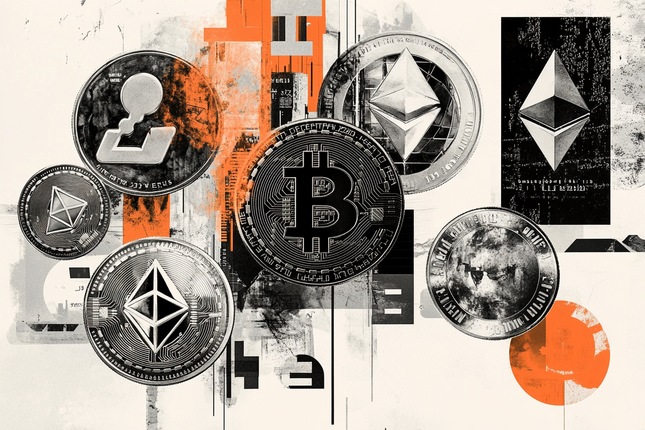Data security is the process of ensuring the protection of digital information and preventing unauthorized access. Since data is a critical part of trading, seeking ways to protect it is the same as protecting your interests and investments. Besides, trading platforms and businesses have a legal obligation to guarantee their clients' sensitive data are secure.
Cyber threats, such as ransomware, must be prevented. Even though you can trust ransomware recovery services to help you with data recovery and ransomware removal, these threats damage your business reputation, which leads to losing clients.
Ensuring data privacy and cyber security is critical in the digital economy. For it, you can follow security best practices and apply data security technology, like data encryption and timing the sections so it logs off after a shorter period of inactivity.
Trade and data security
It’s impossible to separate trading and data security. In an era where information is digital and global, keeping sensitive data safe is the first concern of businesses and individuals.
That’s because digital trading transfers sensitive information and money online, requiring greater security solutions to ensure its privacy.
Trade involves the consensual exchange of money for goods or services from one person or company to another. It can also refer to platforms or users that trade stocks to profit, known as Stock Trader.
Therefore, trading involves a lot of sensitive data, including clients' and companies' financial details. You can build a security plan with the necessary measures that will keep the data safe against cyber attacks.
Ransomware is one of the ways cybercriminals threaten your data. This is a type of malware that encrypts files and only releases the decryptor after ransom payment. Lately, hackers are also demanding payment in exchange for not releasing collected data to Tor websites, in a tactic known as double extortion.
Data breach puts your business in danger as it reveals clients' sensitive data like financial information and passwords.
Critical vs. sensitive data security in trading
Trading involves the exchange of sensitive and valuable data, including financial information, market analysis, and trade secrets. These data must be kept confidential, and their security must be ensured at all times.
There’s a large difference between critical and sensitive data.
Critical data is the information that has the highest requirement for availability. It is the data your company can’t function without. Meanwhile, sensitive data is personal information, such as ID numbers, banking accounts, passwords, email addresses, etc.
You must ensure cybersecurity protocol in your organization to avoid data breaches. Since Trading companies have to be compliant with data security and privacy regulations, it’s your responsibility to protect clients’ sensitive information. Especially by preventing unauthorized access to your network.
You have data security technologies and cybersecurity best practices in your favor to preserve and protect your company’s data and eliminate vulnerabilities that hackers can exploit. If you don’t have an IT team to ensure security, you can hire a cybersecurity service specialized in Trading to improve your data security.
Consequences of a data breach in trading
The impact of a cyber attack and data breach on Trading can cost the business itself. It can damage your business reputation, and clients may lose their trust in you. And this can affect both big and small companies. Besides, the consequences of a data breach can last for years.
Following a breach, share prices fall and in the long term, companies underperform compared with other companies. Since Trading companies have a lot of sensitive data, their losses are even bigger than other businesses.
An example of the consequences following a data breach is the Equifax incident in 2017.
Equifax Data Breach
Equifax is one of the largest credit-reporting companies in the US. In September 2017, it was hit by a massive data breach that exposed the personal information of nearly 150 million customers, including social security numbers, birth dates, and addresses.
The incident led to a $575 million settlement, the largest ever for a data breach, and left Equifax struggling to regain customer trust.
The breach happened because Equifax failed to patch a well-known vulnerability in its Open Source developing framework. They also didn’t have segmentation on their system, which allowed hackers to gain access to multiple servers. Besides, Equifax failed to renew its encryption certificate, and the attackers exfiltrated it for months before being detected.
From this attack, the lesson is to keep all software updates to prevent zero-day vulnerabilities and to segment the system. Also, using data security technologies, such as encryption, and keeping them updated.
You can contact a cyber security service to improve your security patches. If you’ve been hit already by a cyber attack, immediately contact a recovery service to reduce the impact of the attack.
Tips to ensure data security in trading
You can prevent cyber attacks and protect digital trades by ensuring data security by following a few steps.
How to Secure Trading Platforms
-
Encrypt data before the transfer. Encrypting the data before transferring it will protect it against hackers trying to access the information using the vulnerability that data transfer can be.
-
Close sessions after an inactive time. Open sessions are vulnerable. Apply a system where the system shuts itself down after a few minutes of inactivity to increase security.
-
Use secure networks. Block outside access to the network by applying security layers to the network, including encryption.
-
Enhance data privacy. Follow data privacy and security protocols when trading and transferring data to third-party organizations.
-
Network and endpoint security monitoring. Monitors the network and endpoints (laptops, tablets, mobile phones, etc.) to make sure there are no vulnerabilities or back doors that hackers can exploit.
How to Secure Trade Businesses’ Network
-
Apply network segmentation. By segmenting the network, if one server is attacked, it can’t spread across other servers within the network.
-
Set up multi-factor authentication (MFA). Unauthorized users can’t access accounts when it’s protected by multifactor authentication.
-
Store sensitive data offline. Traders deal with sensitive data, such as banking information. Securing it offline may delay access to it, but increases its security.
-
Ask for only essential information. Too much information about your clients can be a liability. In case of a successful attack, more information than what your business requires will be exposed.
-
Use cybersecurity protocols to find and close vulnerabilities. If you have an IT team, make sure you create security protocols that include monitoring the network for vulnerabilities, such as outdated software or unsecured remote desktop protocols (RDP).
-
Offer employee training in cybersecurity best practices. Employees can unknowingly lead to ransomware in the network. With proper training, you can guarantee incidents don’t happen because of a lack of knowledge.
-
Schedule regular backups. Backups are the most secure way to guarantee the data is safe in case of an incident such as natural disasters or cyber-attacks. Make sure that at least one backup is stored offline to prevent hackers that target backups.
How to Guarantee End-user Security
-
When online, use VPN. A VPN can protect your data when trading online as it encrypts communications on any type of device.
-
Have unique passwords. Each end-user must have their own unique password. Make sure the passwords follow security patterns, such as mixing numbers, letters, and special characters.
-
Use firewalls. A firewall, like antivirus software, can protect devices from malware and other cyber attacks.
Data security technologies for Data Trading
Trading has several types of threats, internal and external. Using more than one type of security technology will enhance your data security.
These are a few technologies that can reinforce data security in trading:
-
Data encryption. Encryption uses algorithms that mix every bit of the data to prevent users without access privileges to read the information.
-
Authentication. This is the process of validating user login credentials to guarantee only the right person can open the file or enter the account. Authentication methods include usernames, passwords, biometrics, etc
-
Data erasure. Deleting old data or user accounts eliminates vulnerabilities that hackers can use.
This article is sponsored content
Due to the large number of variables involved in data recovery, SALVAGEDATA Recovery and its authorized agents (“us”, “we”, or “SALVAGEDATA Recovery”) cannot make any advance guarantees about what files will be possible to recover from a device, if anything. A list of recoverable files to be expected (“file list”) will be provided to the person or agent responsible for the project (“you”, “customer”, or “client”) before the project is completed to be approved by said client. Unrecoverable devices will be returned or securely disposed of. By sending media to us, you agree to operate on good faith intentions of using our recovery services and resources for the purpose of having us recover data from such media.
Editors’ Picks

When is the UK CPI inflation data and how could it affect GBP/USD?
The United Kingdom Office for National Statistics will publish the highly relevant Consumer Price Index (CPI) data for November on Wednesday at 07:00 GMT. GBP/USD is likely to stay subdued if UK CPI meets expectations. However, any upside surprise could cap losses by tempering dovish sentiment ahead of the Bank of England’s policy decision on Thursday.

EUR/USD softens below 1.1750 amid ECB rate hold expectations
The EUR/USD pair declines to around 1.1730 during the early European session on Wednesday, pressured by renewed US Dollar demand. Nonetheless, the potential downside for the major pair might be limited amid the growing acceptance that the European Central Bank is done cutting interest rates.

Gold: Bulls await breakout through multi-day-old range amid Fed rate cut bets
Gold attracts fresh buyers during the Asian session on Wednesday, though it remains confined in a multi-day-old trading range amid mixed fundamental cues. The global risk sentiment remains on the defensive amid economic woes and fears of the AI bubble burst. Moreover, dovish US Federal Reserve expectations lend support to the non-yielding yellow metal, though a modest US Dollar uptick might cap any further appreciating move.

Bitcoin, Ethereum and Ripple extend correction as bearish momentum builds
Bitcoin, Ethereum, and Ripple remain under pressure as the broader market continues its corrective phase into midweek. The weak price action of these top three cryptocurrencies by market capitalization suggests a deeper correction, as momentum indicators are beginning to tilt bearish.

Ukraine-Russia in the spotlight once again
Since the start of the week, gold’s price has moved lower, but has yet to erase the gains made last week. In today’s report we intend to focus on the newest round of peace talks between Russia and Ukraine, whilst noting the release of the US Employment data later on day and end our report with an update in regards to the tensions brewing in Venezuela.
RECOMMENDED LESSONS
Making money in forex is easy if you know how the bankers trade!
I’m often mystified in my educational forex articles why so many traders struggle to make consistent money out of forex trading. The answer has more to do with what they don’t know than what they do know. After working in investment banks for 20 years many of which were as a Chief trader its second knowledge how to extract cash out of the market.
5 Forex News Events You Need To Know
In the fast moving world of currency markets where huge moves can seemingly come from nowhere, it is extremely important for new traders to learn about the various economic indicators and forex news events and releases that shape the markets. Indeed, quickly getting a handle on which data to look out for, what it means, and how to trade it can see new traders quickly become far more profitable and sets up the road to long term success.
Top 10 Chart Patterns Every Trader Should Know
Chart patterns are one of the most effective trading tools for a trader. They are pure price-action, and form on the basis of underlying buying and selling pressure. Chart patterns have a proven track-record, and traders use them to identify continuation or reversal signals, to open positions and identify price targets.
7 Ways to Avoid Forex Scams
The forex industry is recently seeing more and more scams. Here are 7 ways to avoid losing your money in such scams: Forex scams are becoming frequent. Michael Greenberg reports on luxurious expenses, including a submarine bought from the money taken from forex traders. Here’s another report of a forex fraud. So, how can we avoid falling in such forex scams?
What Are the 10 Fatal Mistakes Traders Make
Trading is exciting. Trading is hard. Trading is extremely hard. Some say that it takes more than 10,000 hours to master. Others believe that trading is the way to quick riches. They might be both wrong. What is important to know that no matter how experienced you are, mistakes will be part of the trading process.
The challenge: Timing the market and trader psychology
Successful trading often comes down to timing – entering and exiting trades at the right moments. Yet timing the market is notoriously difficult, largely because human psychology can derail even the best plans. Two powerful emotions in particular – fear and greed – tend to drive trading decisions off course.
